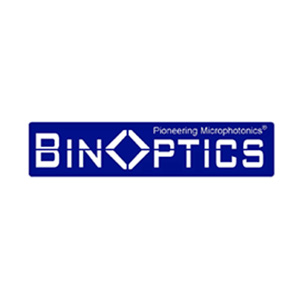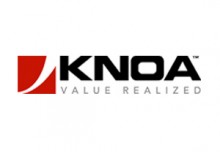September 13, 2013
As photonics integration on silicon gathers momentum, US-based BinOptics is set to break into the market with its etched facet lasers, reports Compound Semiconductor.
![]()
With the future of computer technology hinging on ultra-fast data transfer between and within microchips, all eyes are on silicon photonics as an option to keep traffic moving.
One company keen to cash in on this rapidly growing field is US-based manufacturer of etched facet lasers, BinOptics.
Using its so-called Etched Facet Technology, the company has fabricated and recently incorporated InP based lasers and other photonics components for use in silicon photonics applications.
“We’ve seen the level of interest in silicon photonics rise very dramatically over the last twelve months,” says chief executive Alex Behfar. “This is an exciting time for silicon photonics and I think we will see some applications – people have talked about the use of silicon photonics in active optical cables – in the coming year.”
Mechanical cleaving of semiconductor epiwafers is the usual way to define reflective mirrors or facets at the ends of edge-emitting diode lasers. However, this process can be imprecise and incompatible with monolithic integration.
With this in mind, Behfar started developing an alternative method while at Cornell University in the late 1980s, and has since commercially developed his process, known as etched-facet technology (EFT).
Based on photolithography and chemically assisted ion-beam etching to form facets, the process has since been used to mass manufacture millions of edge emitters and surface-emitting lasers, known as horizontal cavity surface emitting lasers, HCSELs, as well as integrated photonic devices for Ethernet and Gigabit Passive Optical Networks.
And having bagged a healthy $13.3million in new investment in late 2011 to fund development in new markets, the company is ready to fabricate edge facet InP lasers for hybrid silicon photonic circuits. According to Behfar, his company can use EFT to fabricate edge emitters or HCSELs, depending on the silicon photonics platform to be used. But why turn to an edge facet laser?
A clear advantage of BinOptics’ lasers is that edge facet technology enables the etching of angled facets that allow light to emerge at an angle or perpendicular to the surface of the InP chip, aiding coupling to grating couplers on silicon photonic chips. But why not use a VCSEL then?
As Behfar highlights, his InP lasers typically emit at 1270nm, 1290nm, 1310nm and 1330nm, as well as across the optical C-Band, 1525nm to 1565nm. VCSELs are based on GaAs wafers and emit from 650nm to 980nm with the fabrication of long-wavelength InP VCSELs having barely left the research lab. What’s more, silicon photonics applications demand power levels that are difficult to achieve with VCSELs.
And as the chief executive is quick to highlight, while facet cleaving and subsequent coating operations can cause device failures, EFT followed by the company’s proprietary passivation technology circumvents this problem and also eliminates the need for hermetic packages.
“EFT laser chips have successfully passed 5000 hours reliability in 85°C and 85% relative humidity,” he says. “You can just put these chips down and they operate in a non-hermetic environment, unlike photonic devices that need expensive TO-can or butterfly-type packages.”
But crucially, EFT enables manufacturers to use low-cost passive alignment, rather than more expensive active alignment, when coupling either a edge facet-fabricated edge emitter to a silicon photonics waveguide or a HCSEL to a grating coupler on the silicon photonics chip.
As Behfar highlights, EFT formed fiducial marks or cross-hairs, applied to the EFT laser chip and silicon photonics chip, can be used to position one with respect to the other to an accuracy of ±0.1 µm.
![]()
EFT can be used to etch fiducial marks to the laser and silicon photonics chip, aiding low-cost passive alignment.
In contrast, mechanical cleaving has limited the the accuracy of passive alignment to around ±2µm in high throughput manufacturing. As a result many manufacturers – worried that this level of accuracy is insufficient for high performance communications – have turned to active alignment, using precision instruments.
The accuracies may be greater, but as Behfar asserts: “Active alignment involves powering the laser as well as a relatively long alignment time to optimise the coupling to a waveguide. This makes the process generally expensive, and at least one order of magnitude higher in cost, than passive alignment. The economics of active alignment just don’t work.”
“With EFT, you still get the precision and optical coupling you need with out having to resort to active alignment,” he adds.
And with his sights set on near-term silicon photonics applications, Behfar also hopes his lasers will be snapped up for the chip to chip and on-chip applications of tomorrow. “These applications are still a few years away but they are extraordinarily exciting, and we hope to contribute to that with our technology,” he says.




